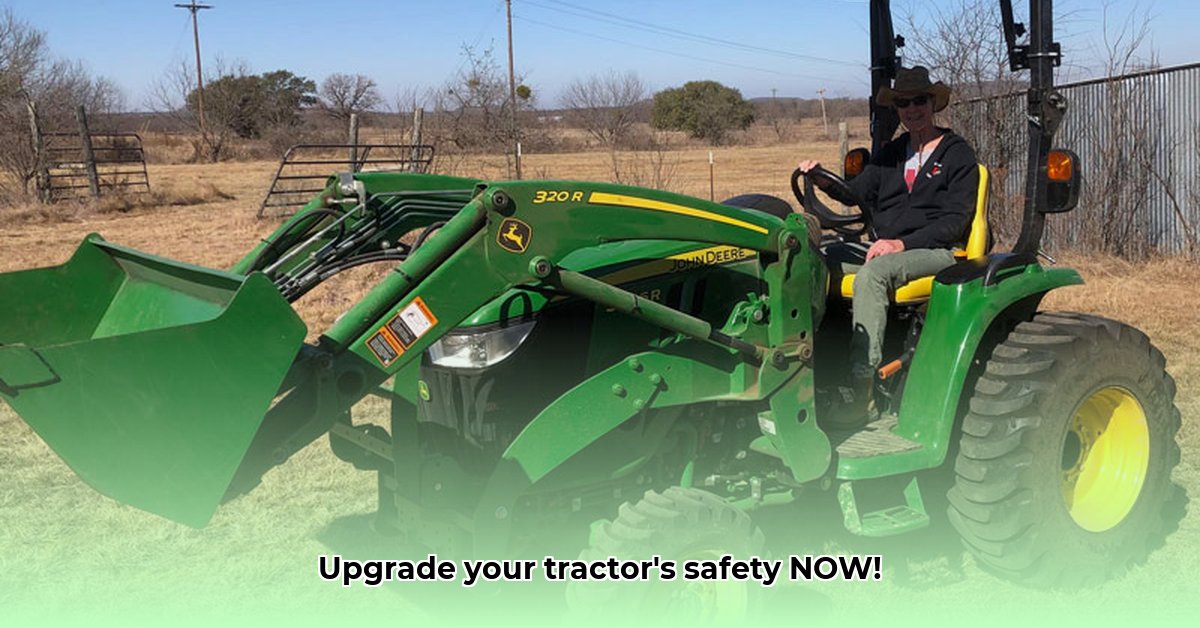
Metal Tractor Canopy: A Comprehensive Guide to Choosing the Right One
Selecting a metal tractor canopy is a crucial decision impacting both farm safety and operational efficiency. This comparative analysis examines two leading brands – Iron Bull Manufacturing (IBM) and A&I Products – to help farmers make informed choices. The optimal canopy depends on individual farming needs and budgetary constraints. For more canopy options, check out this helpful resource: Canopy Options.
Material and Durability: Steel, Aluminum, and Considerations Beyond Metal
Both IBM and A&I offer metal canopies, but their material choices and construction techniques differ significantly. IBM utilizes a variety of materials, including steel, aluminum, and even plastics, offering a broader price range. This suggests a focus on providing diverse, adaptable solutions across various budget levels. Conversely, A&I emphasizes premium steel and aluminum, producing what some might describe as higher-end, precision-engineered canopies. This difference directly impacts durability; metal canopies generally exhibit a longer lifespan than plastic alternatives. However, the environmental impact of manufacturing and disposal differs; metal production carries a larger carbon footprint compared to certain plastics. Plastic canopies, while potentially requiring more frequent replacements, might offer a more sustainable approach in the long term. The choice necessitates a careful balance between durability and environmental considerations. Do you prioritize a longer life-cycle, or are you willing to trade longevity for reduced environmental burden?
Features and Options: Beyond Basic Protection
Both companies offer canopies in various sizes and colors, allowing for some degree of customization. However, A&I often includes superior customization options and advanced features. IBM's offerings generally provide reliable, no-frills protection. A&I, in contrast, might offer enhanced visibility windows, improved ventilation systems, or even integrated lighting systems. Determining which features are essential to your operations is critical. Likewise, ease of installation should be a factor; some farmers prioritize simplicity, while others value robust construction. What are your priorities: ease of installation and use, or unyielding strength?
Pricing and Long-Term Value: Beyond the Sticker Price
Direct price comparisons are not currently available. However, based on material choices and feature sets, it's expected that IBM's multiple material options provide a wider price range, appealing to those operating on tighter budgets. A&I's focus on premium materials and features suggests a higher price point, likely targeting larger farms or those seeking maximum durability. It's crucial to remember that the cheapest canopy may not be the most cost-effective solution over time; consider maintenance, repairs, and potential premature replacements when evaluating the true cost. How do you balance initial cost with long-term value?
Target Market: Tailoring the Canopy to Your Farm
IBM's canopies appear best suited for smaller farms and budget-conscious farmers who need reliable, affordable protection. They emphasize practical solutions without unnecessary extras. A&I's premium materials and extensive customization, however, seem tailored to larger operations and those prioritizing superior strength and long-term investment. This resembles the difference between a cost-effective truck and a more luxurious SUV—both serve a purpose, but their target audiences are distinct. Which type of farmer are you?
Actionable Insights for Informed Decision-Making
Define Your Needs: Identify essential features. Prioritize durability, affordability, ease of installation, or a combination thereof.
Analyze Total Cost of Ownership: Acquire quotes from both companies. Consider not only the initial price but also ongoing maintenance, potential repairs, and replacement costs.
Seek Independent Reviews: Research online forums and agricultural publications for farmer feedback on IBM and A&I canopies. This real-world perspective is invaluable.
Directly Engage Manufacturers: Contact both companies to address specific questions about materials, warranties, installation, and any relevant concerns.
Risk Assessment and Mitigation: Protecting Your Investment
Understanding potential risks and implementing mitigation strategies is paramount. The table below outlines key risks, their probability, impact, and suggested mitigation strategies:
| Risk Factor | Probability | Impact | Mitigation Strategy |
|---|---|---|---|
| Corrosion (Metal Canopies) | Medium | Medium | Choose corrosion-resistant materials; apply protective coatings; implement regular cleaning and inspection. |
| UV Degradation (Plastic Canopies) | Medium | Low | Opt for UV-resistant plastics; plan for periodic replacement. |
| Improper Installation | High | Medium | Follow installation instructions carefully; consider professional installation. |
| Theft | Low | High | Secure the canopy with robust locking mechanisms; consider additional security measures. |
Regulatory Implications and Sustainable Agriculture
Both IBM and A&I must comply with relevant safety and environmental regulations. However, it's important to note that regulations concerning sustainable materials are evolving. Future regulatory changes should be considered when evaluating a canopy's long-term sustainability.
Conclusion: Choosing the Right Canopy for Your Farm
This analysis demonstrates that the "best" metal tractor canopy is highly dependent on individual farm needs and budget constraints. IBM provides cost-effective solutions for smaller-scale operations, while A&I caters to larger farms prioritizing high-end features and durability. Careful consideration of material, features, and long-term costs is crucial in selecting the most suitable canopy.
Call to Action: Prioritize Safety and Sustainability
We encourage farmers to thoroughly research available canopy options, aligning their choice with specific needs and budget. Moreover, actively engaging with policymakers to advocate for incentives supporting sustainable agricultural practices is vital for the industry's long-term health.